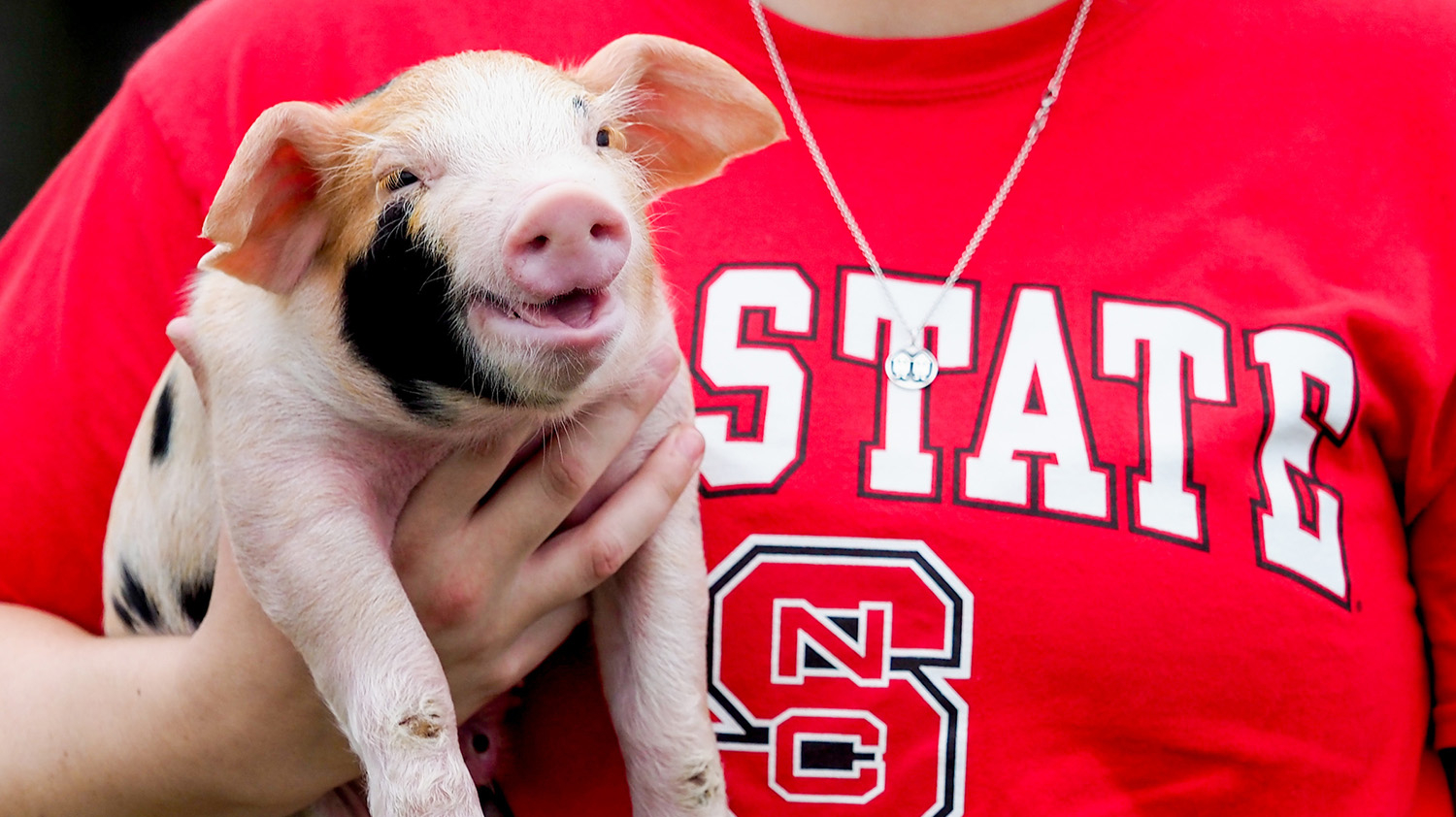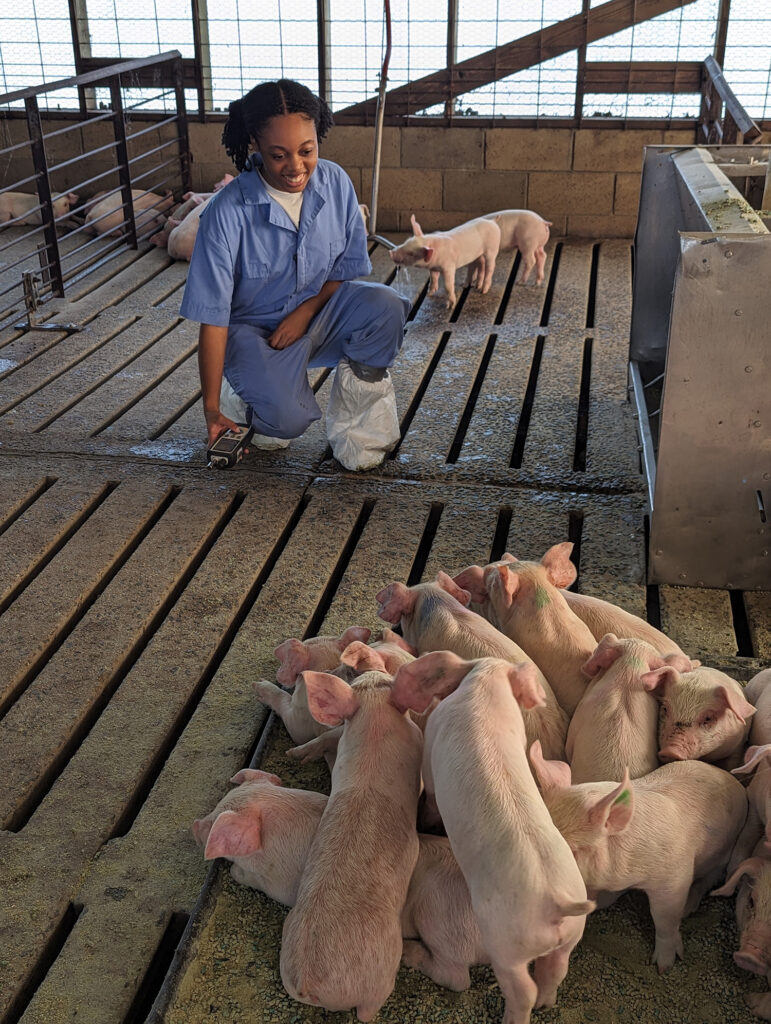Supporting Swine

By Jess Clarke
In the pork industry, growth is key.
Some pigs mature more efficiently than others — they may even be weeks ahead.
What helps pigs grow best? Department of Animal Science professors at NC State University’s College of Agriculture and Life Sciences are trying to find out with ongoing research focused on indoor barn environments.
Preliminary results indicate that barn conditions can affect the rate and also the efficiency of pig growth, measured by how many pounds of feed it takes to produce a pound of pork. The research is in partnership with Glen Almond, a professor of swine health and production management in NC State’s College of Veterinary Medicine.
Pig-efficiency research in the U.S. typically has focused on nutrition and genetics. CALS researchers took a different approach. They collected data on temperature, humidity, carbon dioxide levels, ammonia concentrations and other conditions in North Carolina barns for about 18 months. The results showed the biggest influences on pig growth were temperature and carbon dioxide.
“We measured a lot of different air quality and husbandry parameters, and that’s not an unexpected result,” says lead researcher Suzanne Leonard, animal science assistant professor and Extension specialist.
Her research could lead to both increased animal well-being and more sustainable pig production.
“If we can grow pigs using less feed to reach market weight, it ties into our sustainability goals because we need less feed and water resources, less time and less energy consumption. By optimizing the process, we can increase the sustainability of the whole operation,” Leonard says.
Temperatures can vary from one side of a barn to another. Depending on the facility, a grower might have four or five fans on constantly. In cold weather, barns are heated for pigs. That makes energy usage the second highest cost for growers after feed.

Ongoing barn monitoring will help Leonard’s team find a balance of smart utility use and increased pig efficiency. “By having all this data, we can hopefully parse out exactly where that sweet spot is and where that ideal temperature and energy-use mix would be,” she says.
Her team will study the use of sensors in barns to measure conditions and advise growers about temperature, carbon dioxide levels and other factors. Barn size and composition also will play a role in the parameters.
It’s a proactive research method.
“There aren’t as many engineers working on barn and facility design,” says animal science professor Mark Knauer, who is involved with the research. “We went in and looked at barns in much more detail … Potentially we’ll be able to see where a grower may have a weakness in the system that may need to be fixed.”
One example, Knauer says, would be to increase barn temperature a few degrees.
Many CALS students have had a role in the research, giving them real-world experience.
Animal science master’s student Olivia Kittle helped wire, calibrate and install sensors in facilities to measure temperature, humidity, carbon dioxide and ammonia levels. She also downloaded sensor data and gathered information about particulate matter, ventilation and other metrics.
“Gaining the chance to conduct research in commercial wean-to-finish facilities in North Carolina and acquiring hands-on experience with factors influencing pig production has been incredibly valuable,” Kittle says. “Learning to collect and analyze data, and to effectively communicate those findings to producers for informed decision-making, will be immensely beneficial for my future career.”
And keeping pigs more comfortable in barns as they grow could be beneficial for pork consumers, too.
“We can definitely maintain if not improve pig health and welfare,” Leonard says. “If we can do that more efficiently, it will help keep production costs low, which will keep costs lower for consumers. We want to provide safe and affordable protein for our consumers.”
This post was originally published in College of Agriculture and Life Sciences News.


